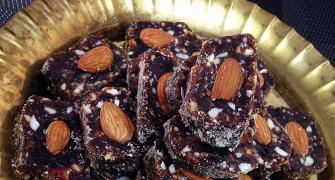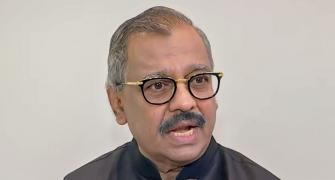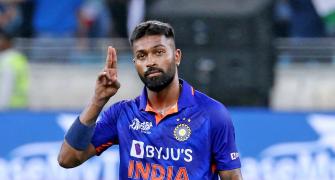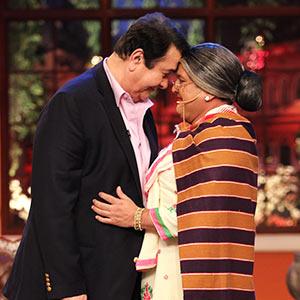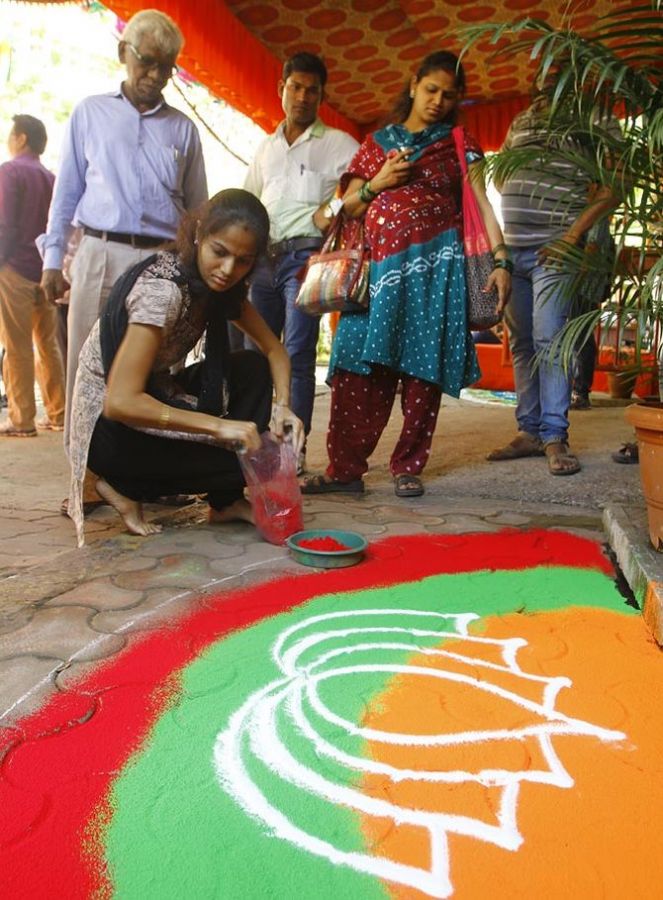 The BJP took a gamble and won; Uddhav Thackeray is down, but not out; Sharad Pawar accepts Modi's clout...
The BJP took a gamble and won; Uddhav Thackeray is down, but not out; Sharad Pawar accepts Modi's clout...
Sheela Bhatt/Rediff.com on the many meanings of the election results.
One: 'Mere pass Modi hai. Tumhare paas kya hai?' Amit Shah, the Bharatiya Janata Party president, can now ask non-BJP parties after winning the assembly election handsomely in Haryana and Maharashtra.
It was the Narendra Modi-Shah duo's first major political test. They have demonstrated in style that their aim to make the BJP a pan-India party in a real sense is on track.
The BJP is rising and riding on Modi's popularity and Modi is spreading his wings to become a pan-Indian national leader with his party's help.
Two: In Haryana, the BJP has won an overwhelming and unthinkable victory by getting the anti-Jat votes where it matters and even the Jat votes where it was needed.
The stupendous performance has to be credited to Modi as the state BJP had no local leader and not many senior workers. It hardly had any party structure to show till two months ago.
The BJP will rule Haryana with a superb mandate. It has increased its tally from 4 in 2009 to 48 seats and has increased its vote tally from 9 per cent to 33.02 per cent. The Modi swing created history in Haryana.
Three: In Maharashtra there is an endless debate over Modi-Shah's decision to break the alliance with the Shiv Sena.
Amit Shah's press conference after the results on Sunday showed clearly that the BJP and the Nationalist Congress Party have done their homework and the BJP is all set to form the government.
As the single largest party the BJP will be invited by the governor to form the government in Maharashtra. There should be no doubt that the BJP will accept the invitation and declare its chief minister soon.
When political parties win power in a state like Maharashtra, the NCP's corrupt image or all what Modi said against NCP leaders Sharad Pawar and Ajit Pawar won't count. It will be realpolitik and only realpolitik.
Already, Sharad Pawar has moved fast. Amit Shah's stubborn repetition, at the press conference, that the NCP wants to support the BJP 'only from outside' and it is not a BJP-NCP alliance suggests that the issue of corruption and sensitivity about such issues will not be taken into account by the BJP.
For the BJP it seems there is no ethical issue obstructing the way of a political decision to form the government with the NCP's outside support.
Four: The BJP won only 46 seats in Maharashtra in the last election. It is 122 this election. This huge rise was impossible if the BJP had accepted the Sena's offer of 119 seats. There is little doubt that Modi-Shah were correct in breaking the alliance.
By doing so they have ended the Shiv Sena's 'big brother' status, resetting the terms. Modi-Shah have rejuvenated the BJP in the state. The BJP had a 14 per cent vote share in 2009. With Modi's whirlwind political campaign the party has a 27.8 per cent vote share.
Five: Uddhav Thackeray lost anti-incumbency votes in many constituencies to the BJP, but he has won the future.
He has proved that in the fierce competition with his cousin Raj Thackeray, he is the real inheritor of his legendary father's legacy.
Raj's perceived edge over Uddhav in leadership qualities have been put to rest now. The Shiv Sena survived its test in the post-Bal Thackeray era and Uddhav has shown his mettle by winning 61 seats.
Six: This is not just another defeat for the Congress. In Maharashtra and Haryana, voters have not even preferred the party as Leader of the Opposition. If one reads carefully the names of all the Congress candidates who won the election in Maharashtra it suggests that it is not the party, but the candidates' local image and her/his power base that helped them win.
In the BJP's case it is the reverse scenario. In Uttar Pradesh, during the Lok Sabha election, and now in Haryana and Maharashtra, it is the BJP's upward swing that helped unknown, weak and, in some cases, even undeserving candidates to win.
Seven: In Haryana and Maharashtra the geographical divide of political opinions is very clear. In Haryana, the BJP sweep was in north and south Haryana. The Indian National Lok Dal was dominant in central and eastern Haryana.
In Maharashtra, the BJP won 24 seats out of Vidarbha's 60 seats and 15 of Marathawada's 48 seats.
Mumbai's 60 seats saw a tough contest between the Sena and the BJP. Some 24 seats went to the BJP while the Sena won 16 seats. Of the 60 seats in western Maharashtra the BJP and NCP won 17 and 21 seats respectively.
Eight: Sharad Pawar, Maharashtra's tallest leader, did everything to stop the BJP rule his home state, when he failed he offered the party his support.
His party's announcement of support to the BJP is pragmatic. By doing so he is buying space for his party. He is hitting the Sena hard by reducing its negotiation power vis-a-vis the BJP.
Pawar is also buying peace with Modi's expanding power. It is Sharad Pawar's acceptance of Modi's clout.
Nine: In Maharashtra, the BJP won 27.32 per cent votes in the Lok Sabha election while it won 27.8 per cent votes in the assembly election. It won fewer seats if compared to the same assembly segments in the Lok Sabha election.
The Shiv Sena won 16.26 per cent vote share in 2009. It won 19.3 per cent of the vote share five years later, which is less than what it won (20.63 per cent) in the Lok Sabha election.
If the Shiv Sena and BJP had fought the election together they would have got more or less the same number of seats.
By fighting it alone, the BJP has got the tremendous advantage of opening its account all over Maharashtra. It fought an election for the first time in 160 seats. The BJP had never contested more than 119 seats in Maharashtra, but by contesting all 288 seats it has got a party infrastructure overnight in many places.
Similarly, in Haryana the BJP had never contested more than 26 seats. It contested all 90 seats this assembly election and won the highest number of seats in its history. Which is why Amit Shah said, 'Is se badhiya vijay ho nahin sakta (there cannot be a bigger victory than this).'
Ten: The BJP has shown in this election, once more, that it has increasingly turned into a battle-ready machine to fight elections. It depends heavily on the Other Backward Classes castes and then tries hard to get one more dominant caste, by hook or crook, in each constituency to make a winning combo.
The fundamentals of the BJP's election campaign are a. Modi's image of a strong leader who is for development and who will deliver. b. The party structure and accessories remains pro-Hindu. c. And all the BJP governments -- in the states and now at the Centre -- portray an image of being pro-youth, pro-reforms with the leadership believing in speedy governance. d. The organisation skill, huge human resources, manipulation of the media and money power are the icing on the poll-campaign strategies.
Image: BJP supporters create a rangoli outside the party's office in Mumbai. Photograph: Hitesh Harisinghani/Rediff.com

